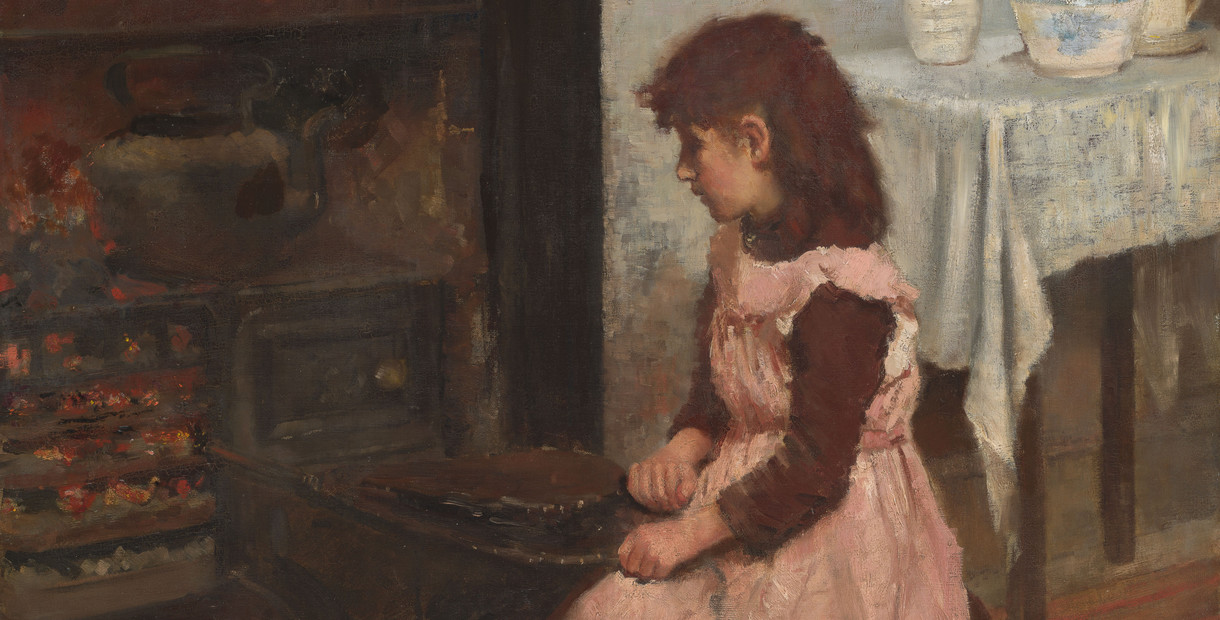Elizabeth Graham Chalmers
England, b.1870, d.1951
Father's Tea
- 1891
- Oil on canvas
- Gift of Caroline Cameron, granddaughter of the artist, 2020
- 1265 x 1165 x 48mm
- 2020/047
Tags: animals, bellows, cats, coal, fireplaces, fires (events), furniture, girls, heat, people (agents), pink (color), stoves (heating equipment), tablecloths, teapots
In seeming to open a window into everyday domestic life, Father’s Tea also tells a hidden tale of family connections. Elizabeth Graham was 21 when she exhibited this work at the Royal Scottish Academy exhibition in Edinburgh in 1891. She was then living in Newlyn, Cornwall and under the tutelage of her future brother-in-law, leading Newlyn School painter Frank Bramley. Elizabeth’s younger sister Katharine would marry Bramley later that year. The kneeling girl blowing the coals with bellows is likely their sister Margaret, also recorded at this time as staying with their parents in Newlyn. Elizabeth Graham married Charles Chalmers in 1900 and they became Frank Bramley’s major patrons. Known as Lady Chalmers following her husband’s knighthood in 1918, she painted sporadically but devoted herself more fully to painting after his death in 1924. This work is a recent gift to the Gallery from her granddaughter.
(Leaving for Work, 2 October 2021 – 2 October 2022)
Exhibition History
[Leaving for Work, 2 October 2021 – 2 October 2022] (https://christchurchartgallery.org.nz/exhibitions/leaving-for-work)
Although appearing to present a scene from everyday domestic life – the kneeling girl working the bellows is boiling the kettle for tea – this is a carefully staged painting that also sets up questions around attribution. The inscription ‘Elizabeth Graham’ had until recently been accepted as a signature, but more likely records the young sitter’s identity. Elizabeth’s father John, a successful woollen manufacturer living in Grasmere, Westmorland, and her mother Jane enjoyed commissioning art. The Grahams met Frank Bramley, a rising young artist, during a holiday in the fishing village of Newlyn, Cornwall, not long after his arrival there near the end of 1884. Bramley, a co-founder of the Newlyn artist colony, married Elizabeth’s younger sister Katherine in 1891. In 1900, Elizabeth married Charles Chalmers, who was knighted by George V in 1918; they became Bramley’s major patrons. Lady Elizabeth Chalmers (1870–1951) also became a painter, and later credited the experience of being painted as a child for this direction. This may be that painting, which sits far more plausibly with Bramley’s work from the mid-1880s than with Chalmers’ work.
(Leaving for Work, 2 October 2021-11 August 2022)



